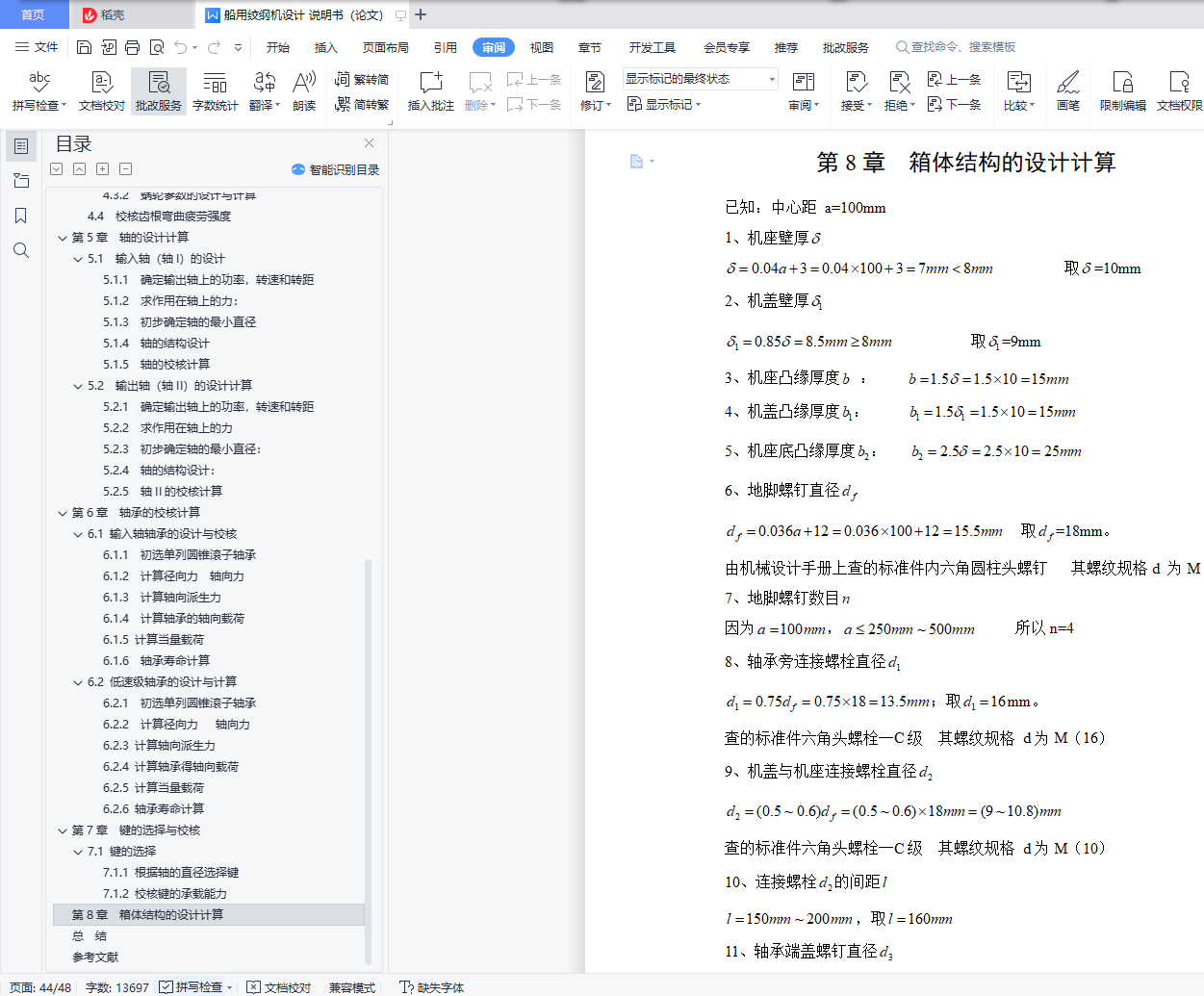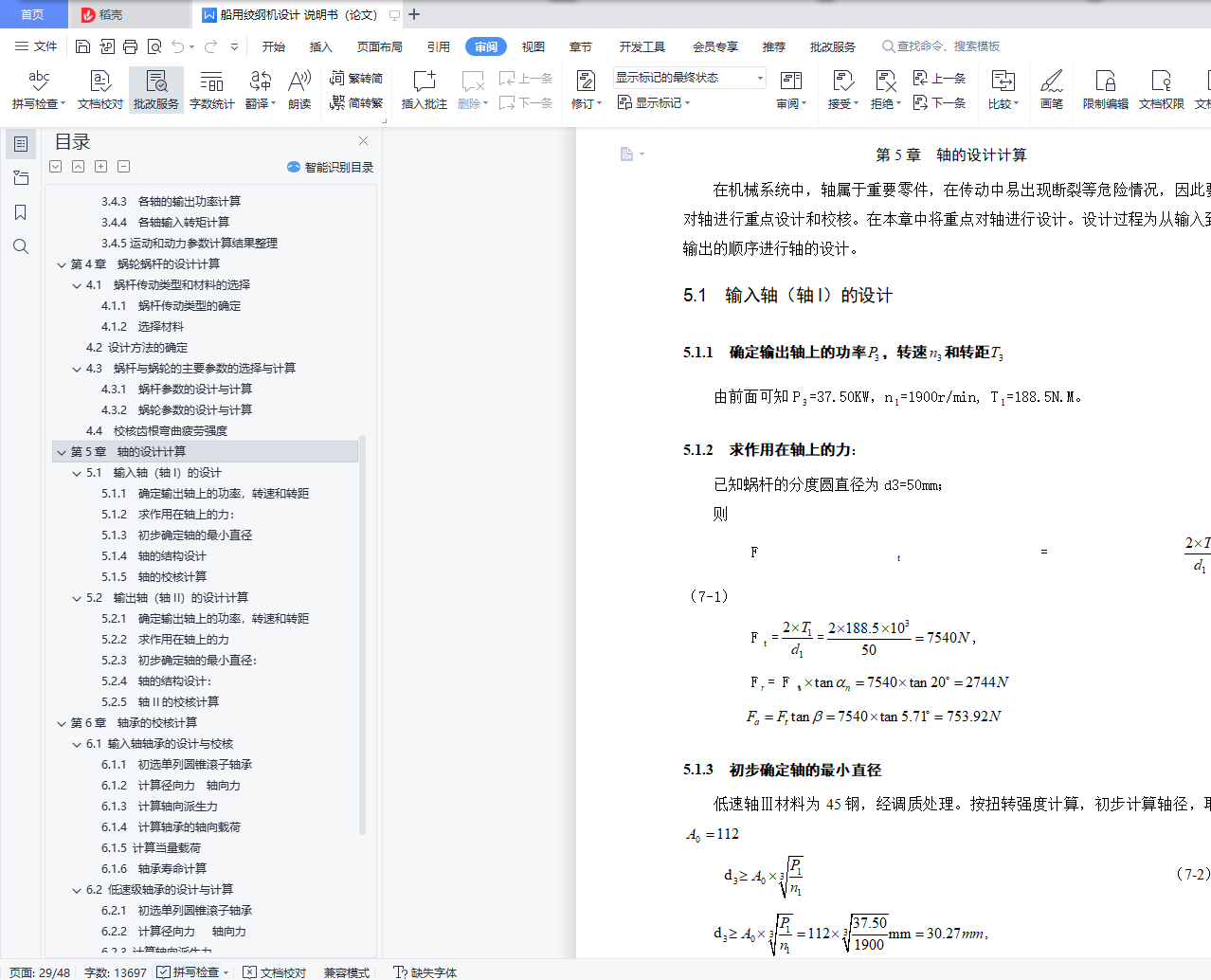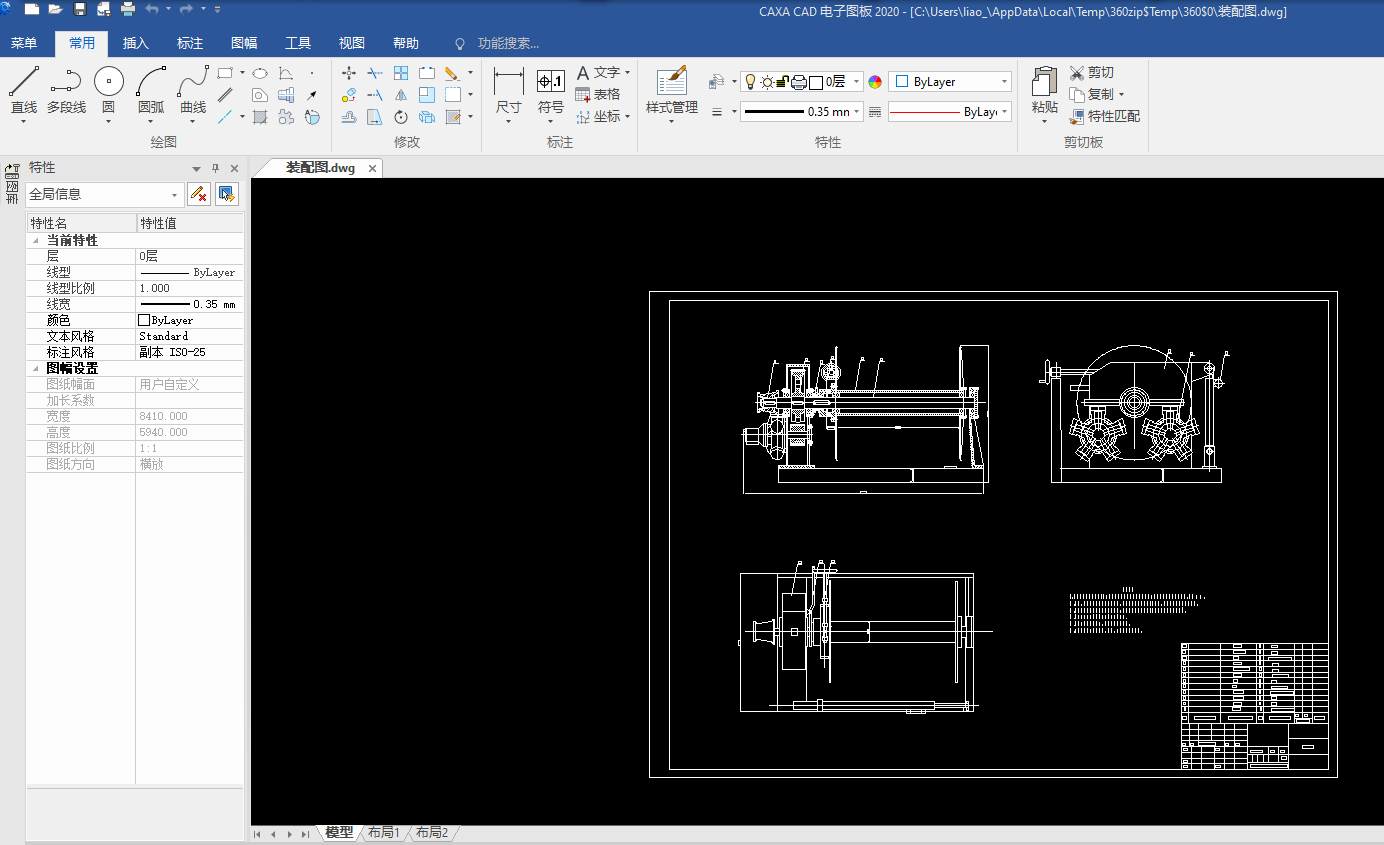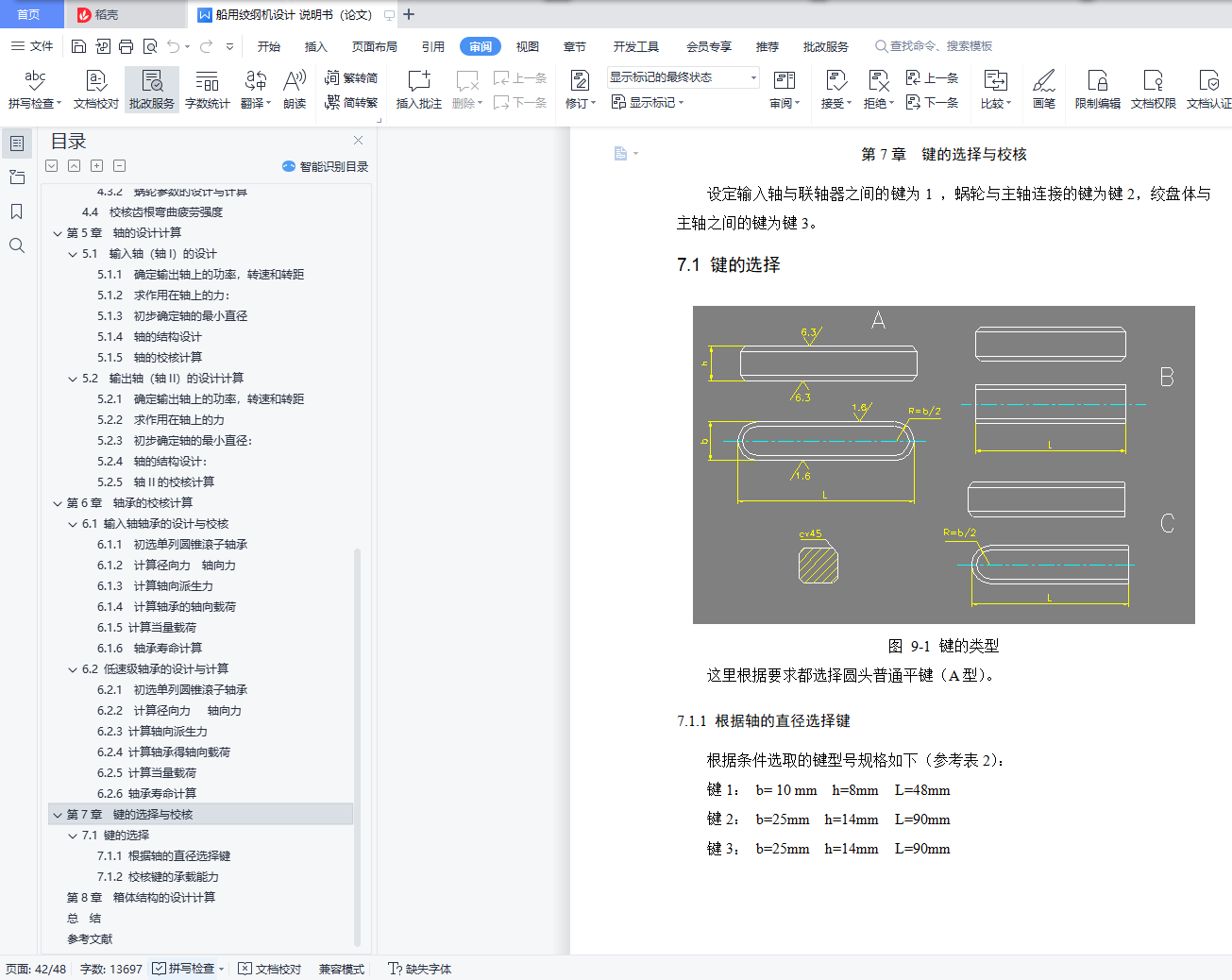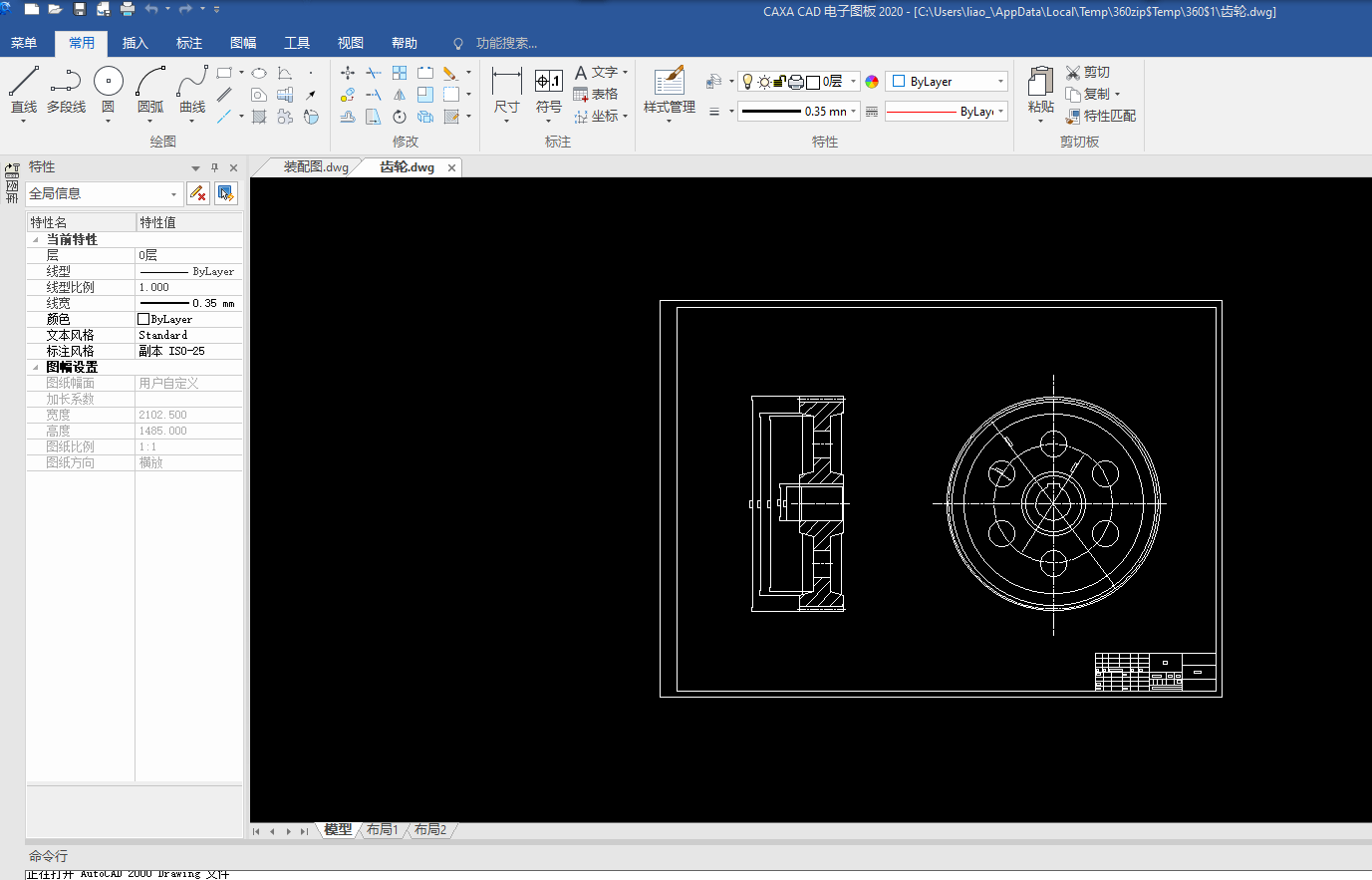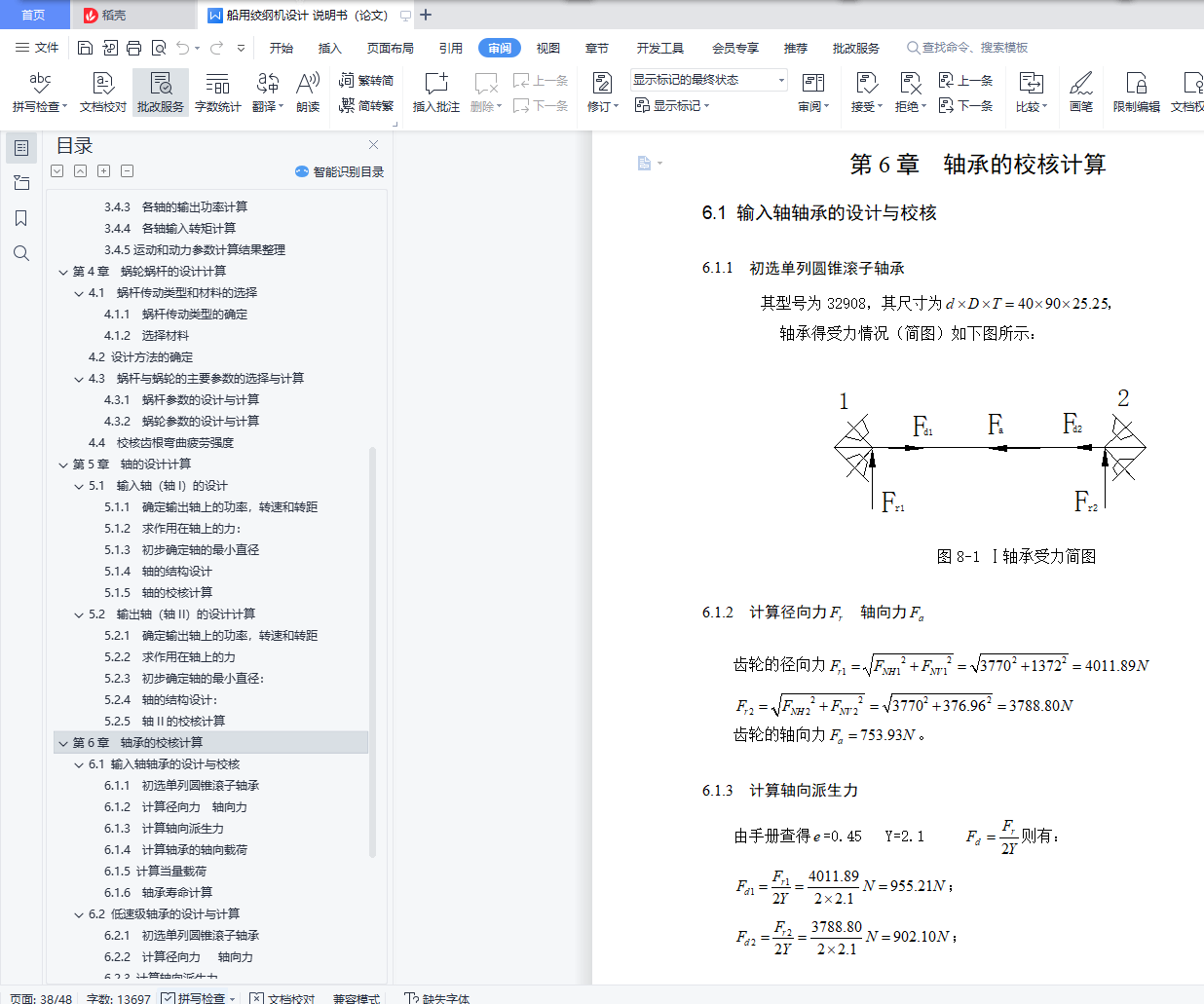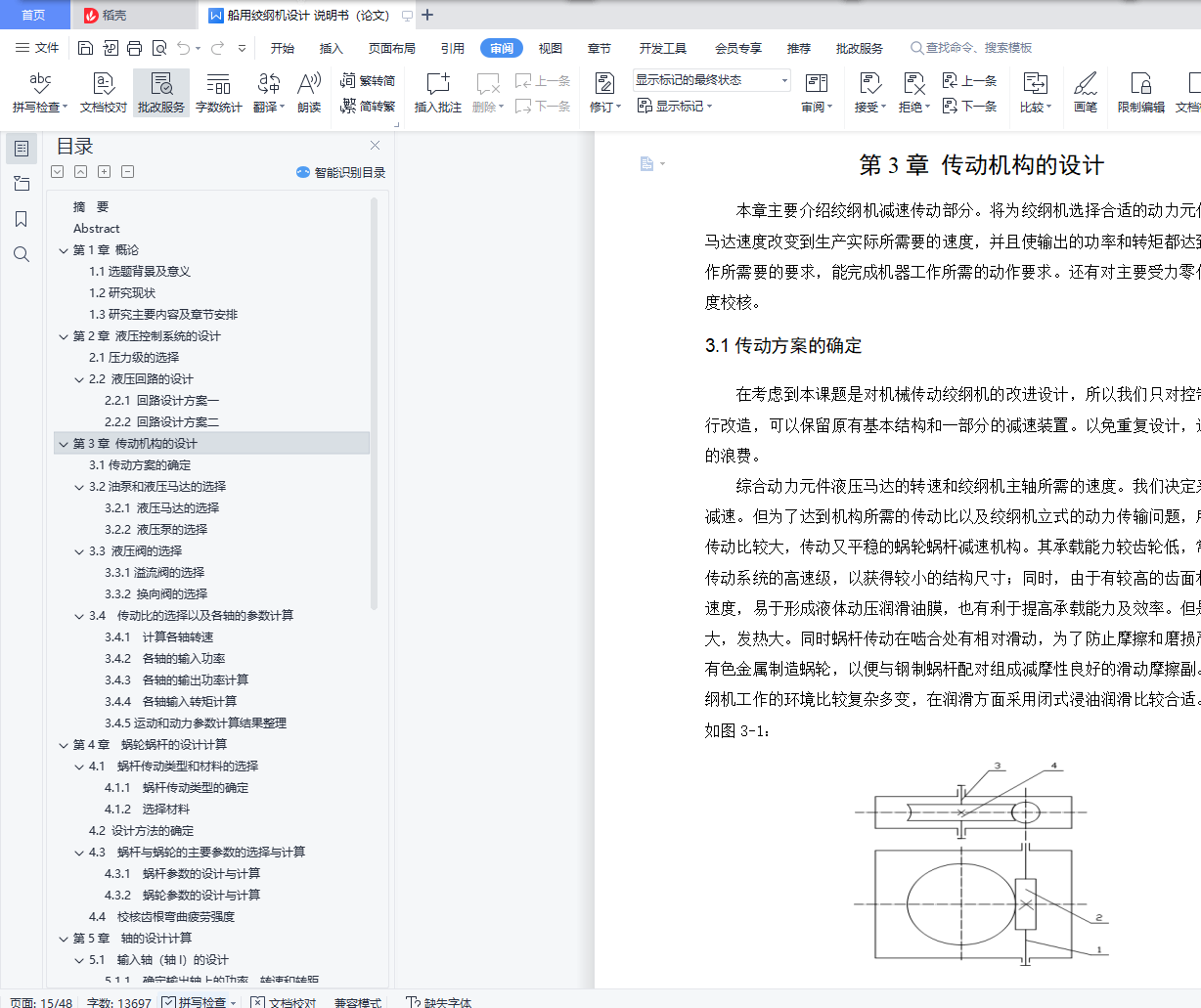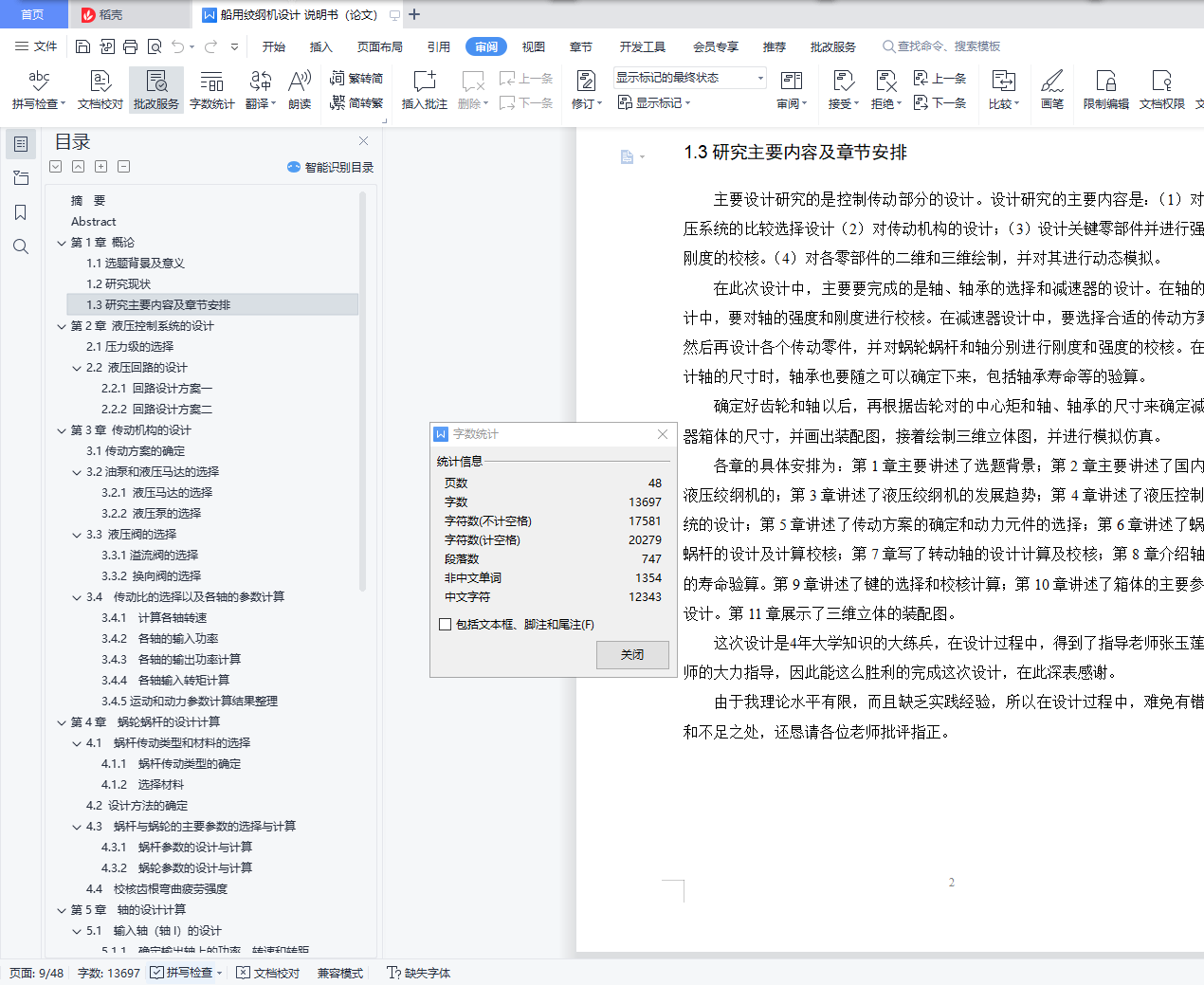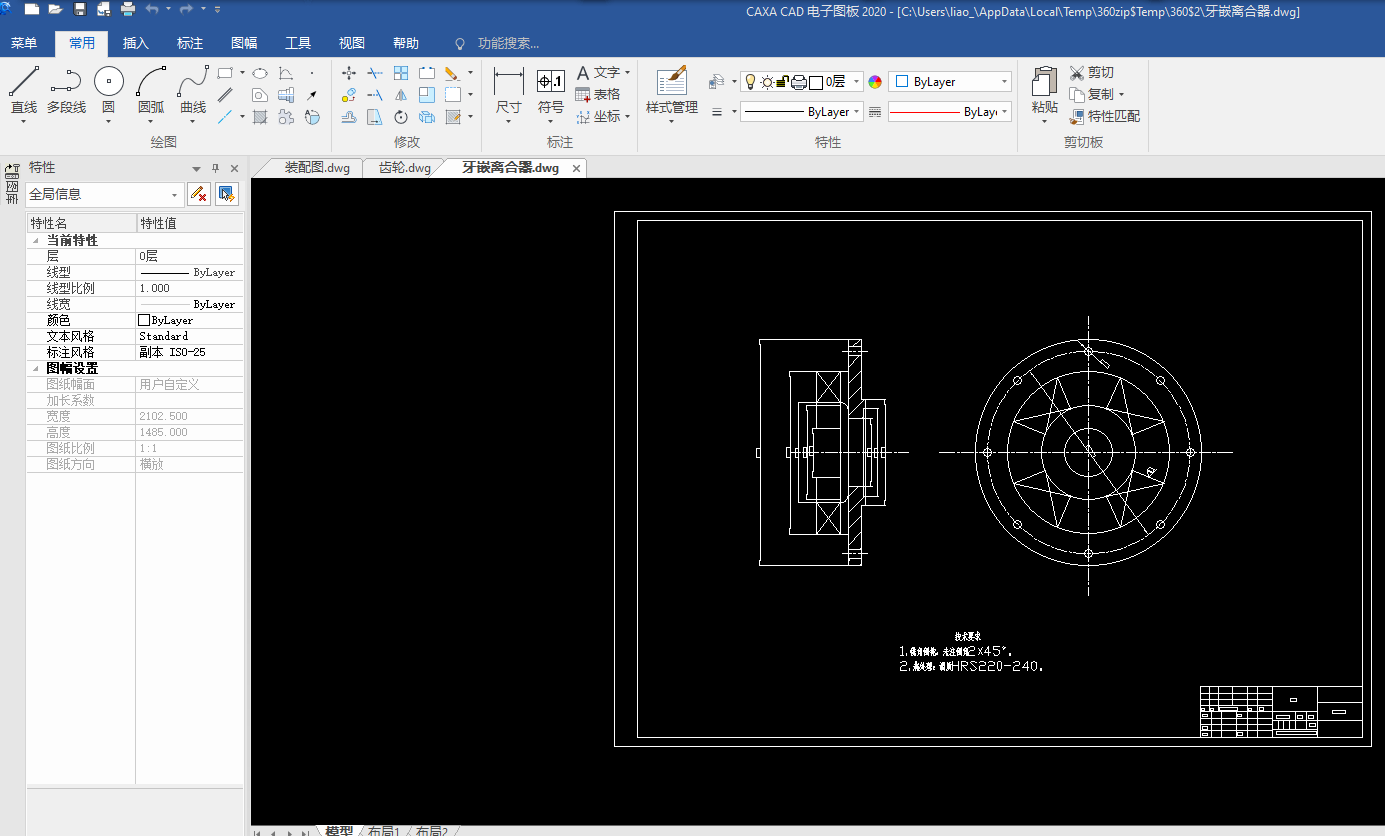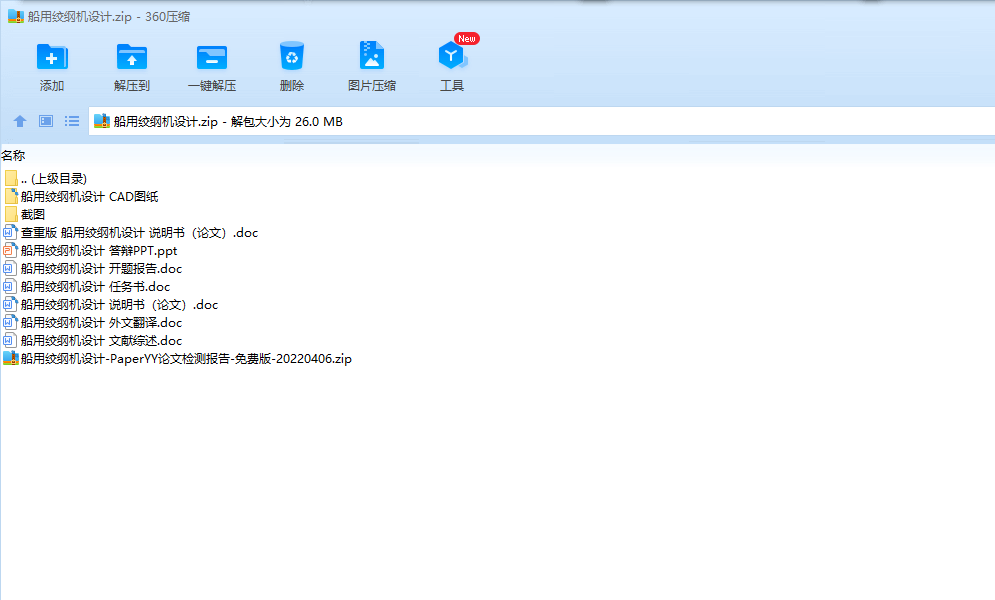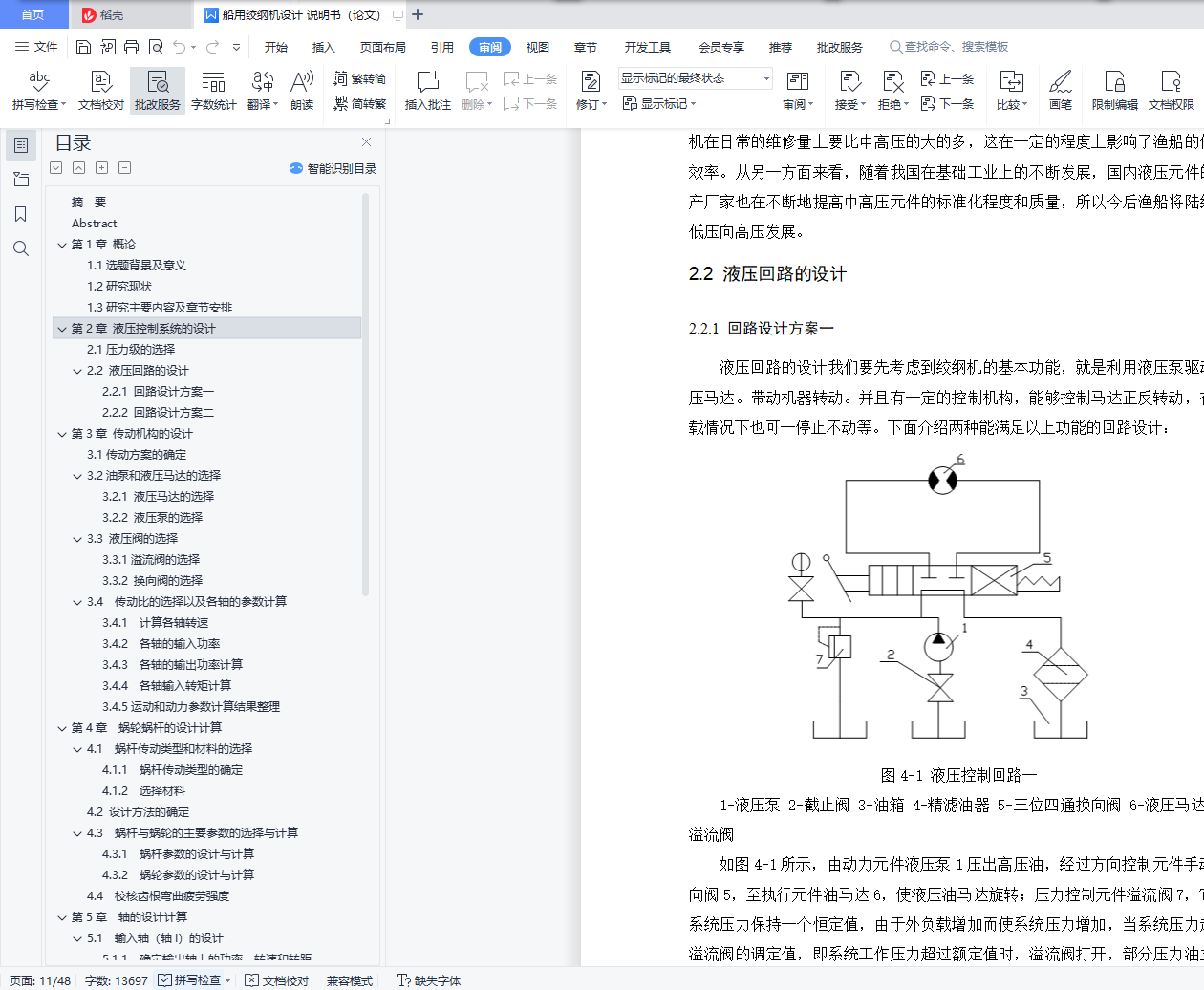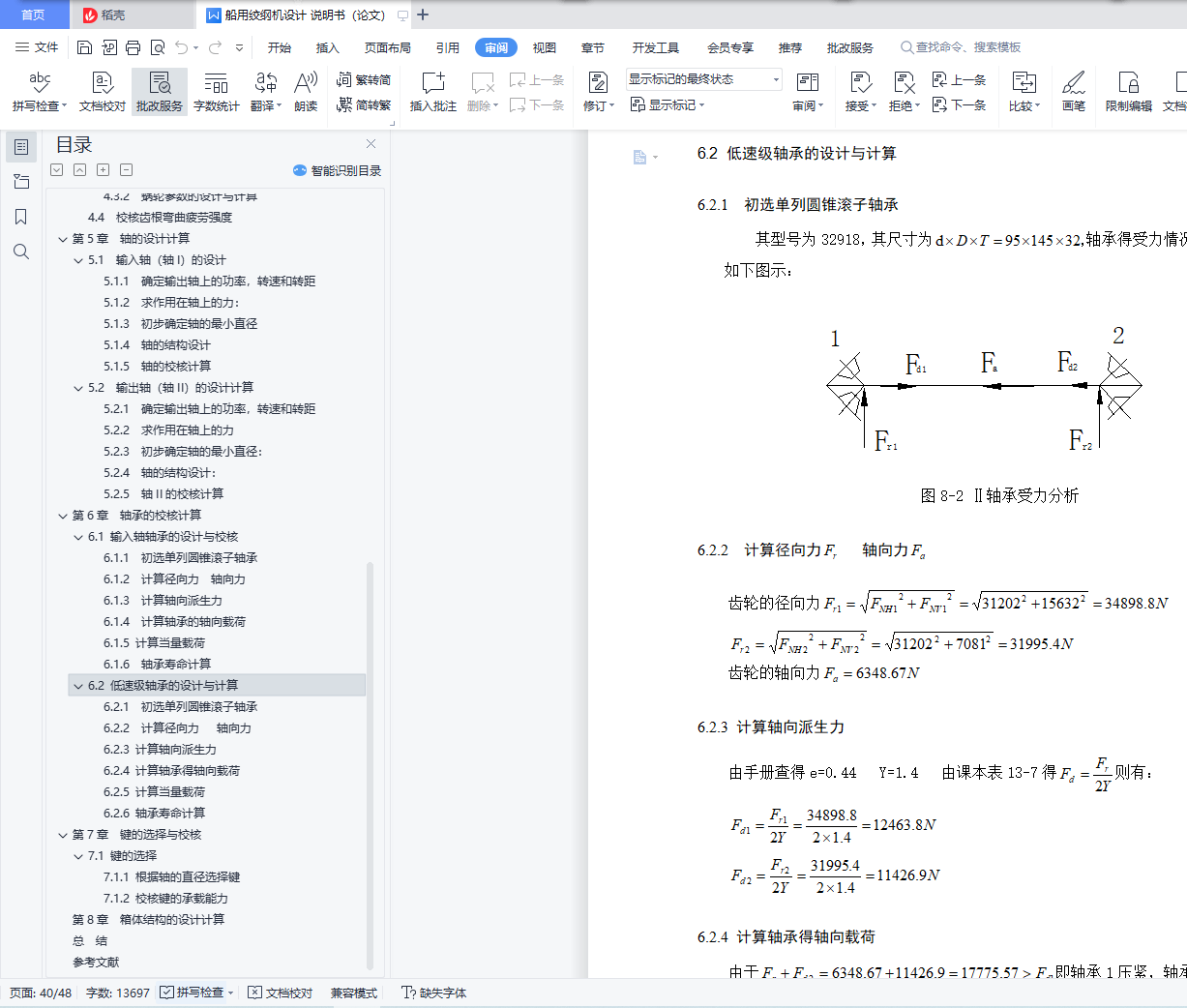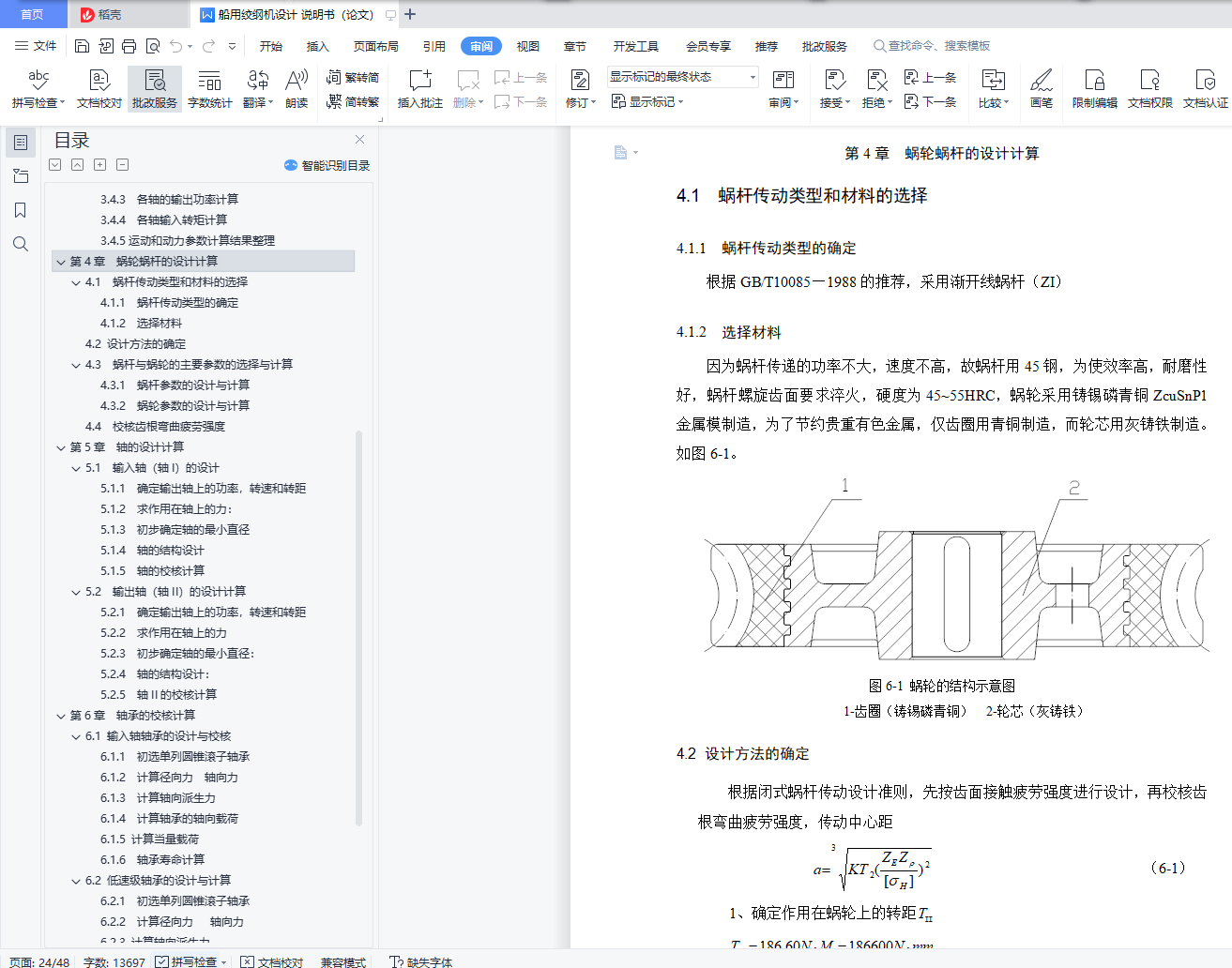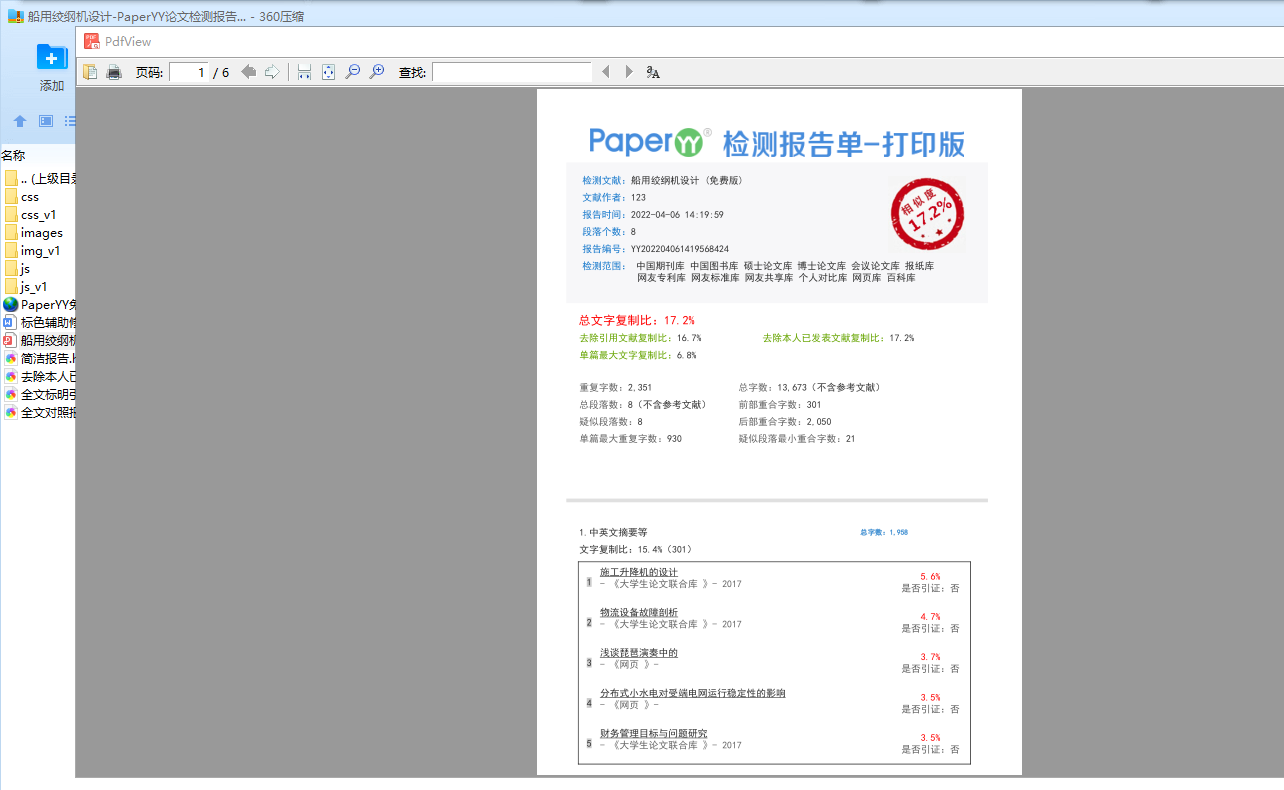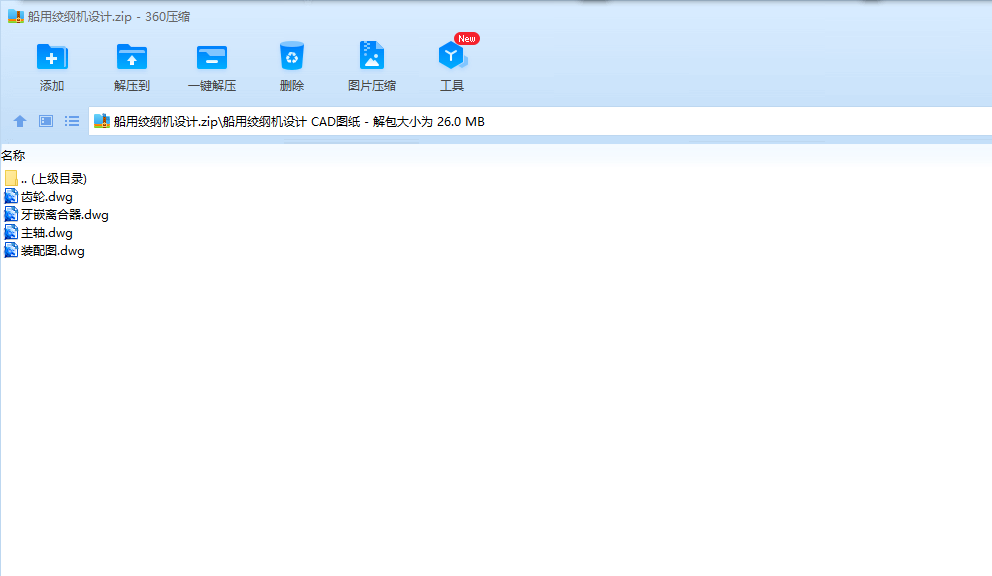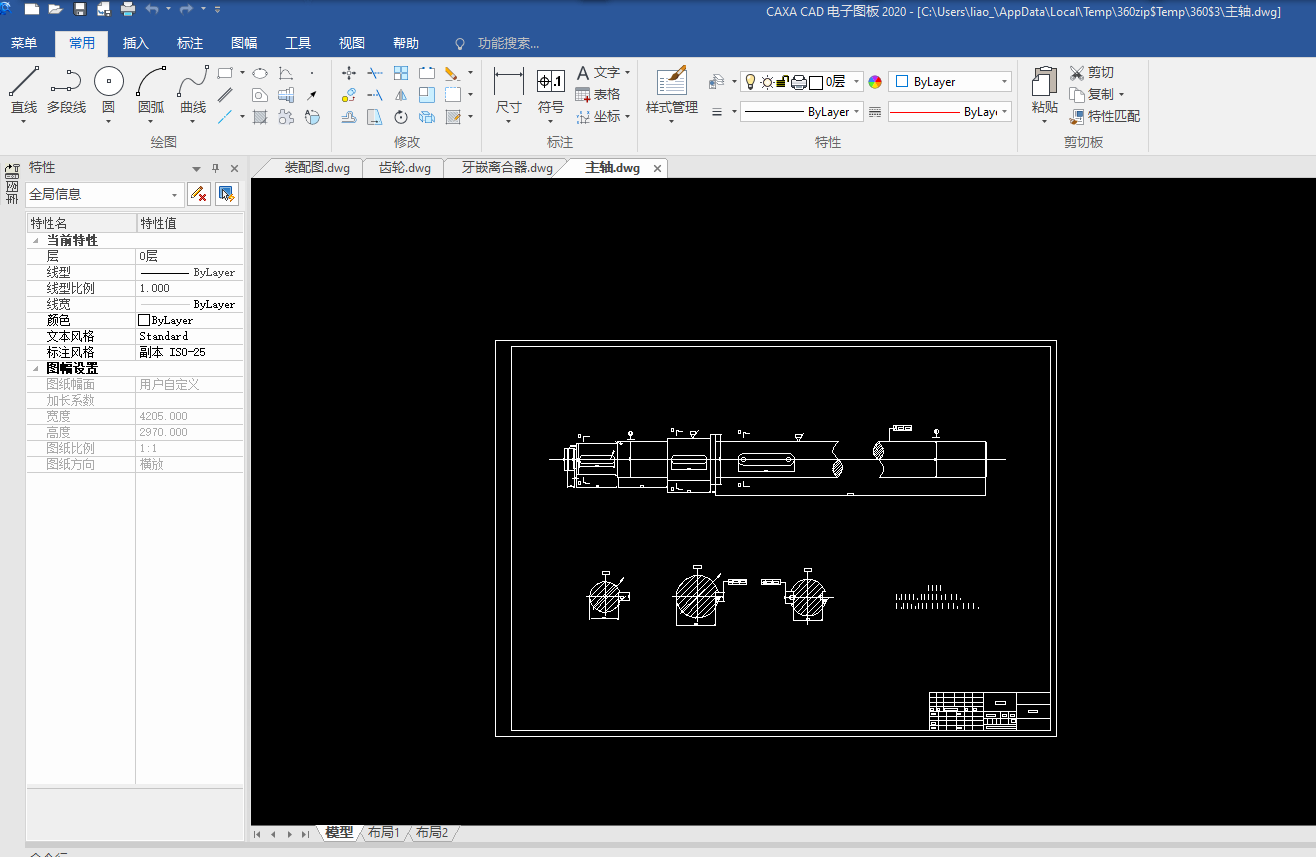摘 要
船用绞纲机是沿海渔船使用最广泛的起网绞纲设备。至今已经有50来年的历史。与卧式相比,它的来向不受限制,结构简单,操作方便,船上机舱人员都可以自己维修;又因为价格适中,使用寿命长等特点,所以深受广大渔民的欢迎。
随着渔业生产的快速发展,渔船的升级。原有的机械式绞纲机已经不能满足现代渔船的需求。它在机械传动中的不稳定性,操作控制上的不方便以及绞纲拉力小和速度慢等缺点也日益暴露出来。由于近年我国基础工业的发展,液压元件的制造技术越来越成熟。在同等功率条件下,液压传动装置比机械传动装置具有体积小,结构紧凑,重量轻,传递功率大,能自动防止过载,可无级变速操作等优点,但是考虑到成本的问题和各方面实际因素,为了能被广大渔民所接受,在本次设计中采取了液压与机械相结合的方法对船用绞纲机的动力传输和控制系统进行了改进。首先用液压控制来代替传统的机械控制。然后对绞纲机的减速系统进行了设计和计算。最后对绞纲机进行三维建模,并对整个装置做一个运动仿真。
本次设计涉及面很广,系统地对我大学四年所学的知识进行了检验。相信通过这次毕业设计将更好地帮助我对整个专业知识的复习。
关键词:蜗轮蜗杆; 液压绞纲机;模拟仿真
Abstract
Vertical winch is the most widely used winching equipment when fishing along the coast in Zhejiang Province. Since the 50's onwards,it is developed by Zhejiang Marine Fisheries Research Institute and Zhoushan shipyard.It is used 50 years. Compared with the horizontal,it is not restricted in the direction,and the structure is simple,the operation is easy, the ship crews can repair the winches by themselves;in addition, because the price is moderate,and it has long time to be used,so it is welcomed by the majority of fishermen.
With the rapid development of fishing production, the fishing boats upgrade. The original winch can not content the need of modern fishing boat any more. The disadvantage about instability of mechanical transmission,inconvenience of operation control, small tension and slow speeding is increasingly exposed. In recent years, with the development of basic industries, manufacturing of hydraulic components is more mature.Under the same power conditions, compared with the mechanical transmission, hydraulic transmission has a series of advantages like the volume is small, the structure is compact, weight is light, transmission power is bigger, and it can automatically prevent overload,and it also have the variable speed operation,but taking into account coast issues and the practical factors in all kinds of aspects,in order to be accepted by the majority of fisherman, in this design, combining the hydraulic and mechanical method to improve the power transmission and control system of vertical winch.First,hydraulic control replace the traditional mechanical transmission.Then designing and calculating the winch’deceleration system. Finally, making the three-dimensional modeling machine, and make a motion simulation to the entire unit .
The design involves a wide range, I test the knowledge learned tested in four years of the college,I believe that this design help me review the overall professional knowledge better.
Keywords : hydraulic transmission;hydraulic turbine control system;hydraulic steel cutter machine;simulation
目 录
摘 要
Abstract
第1章 概论
1.1选题背景及意义
1.2研究现状
1.3研究主要内容及章节安排
第2章 液压控制系统的设计
2.1压力级的选择
2.2 液压回路的设计
2.2.1 回路设计方案一
2.2.2 回路设计方案二
第3章 传动机构的设计
3.1传动方案的确定
3.2油泵和液压马达的选择
3.2.1 液压马达的选择
3.2.2 液压泵的选择
3.3 液压阀的选择
3.3.1溢流阀的选择
3.3.2 换向阀的选择
3.4 传动比的选择以及各轴的参数计算
3.4.1 计算各轴转速
3.4.2 各轴的输入功率
3.4.3 各轴的输出功率 计算
计算
3.4.4 各轴输入转矩计算
3.4.5运动和动力参数计算结果整理
第4章 蜗轮蜗杆的设计计算
4.1 蜗杆传动类型和材料的选择
4.1.1 蜗杆传动类型的确定
4.1.2 选择材料
4.2 设计方法的确定
4.3 蜗杆与蜗轮的主要参数的选择与计算
4.3.1 蜗杆参数的设计与计算
4.3.2 蜗轮参数的设计与计算
4.4 校核齿根弯曲疲劳强度
第5章 轴的设计计算
5.1 输入轴(轴I)的设计
5.1.1 确定输出轴上的功率 ,转速
,转速 和转距
和转距
5.1.2 求作用在轴上的力:
5.1.3 初步确定轴的最小直径
5.1.4 轴的结构设计
5.1.5 轴的校核计算
5.2 输出轴(轴II)的设计计算
5.2.1 确定输出轴上的功率 ,转速
,转速 和转距
和转距
5.2.2 求作用在轴上的力
5.2.3 初步确定轴的最小直径:
5.2.4 轴的结构设计:
5.2.5 轴II的校核计算
第6章 轴承的校核计算
6.1 输入轴轴承的设计与校核
6.1.1 初选单列圆锥滚子轴承
6.1.2 计算径向力 轴向力
轴向力
6.1.3 计算轴向派生力
6.1.4 计算轴承的轴向载荷
6.1.5 计算当量载荷
6.1.6 轴承寿命计算
6.2 低速级轴承的设计与计算
6.2.1 初选单列圆锥滚子轴承
6.2.2 计算径向力 轴向力
轴向力
6.2.3 计算轴向派生力
6.2.4 计算轴承得轴向载荷
6.2.5 计算当量载荷
6.2.6 轴承寿命计算
第7章 键的选择与校核
7.1 键的选择
7.1.1 根据轴的直径选择键
7.1.2 校核键的承载能力
第8章 箱体结构的设计计算
总 结
参考文献
